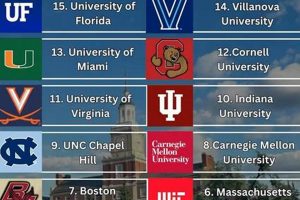A well-stocked school store offering appealing merchandise can significantly enhance the student experience. Popular product categories often include stationery supplies such as pens, pencils, notebooks, and erasers, as well as convenient items like folders, binders, and backpacks. Moreover, schools often find success selling spirit wear, including t-shirts, hoodies, and hats featuring school logos or mascots. Other popular choices encompass personal care items, small snacks, and tech accessories. Offering a diverse selection caters to various student needs and preferences.
Successful school stores provide more than just convenient access to necessary supplies. They can foster school spirit, create a sense of community, and even generate revenue for student activities or school improvements. Historically, school stores began as simple supply closets evolving into vibrant hubs of student activity. This evolution reflects a growing understanding of the role these stores can play in enriching the overall educational environment.
Factors influencing product selection include student demographics, budget considerations, and current trends. This article will further explore specific product categories, effective pricing strategies, and inventory management techniques essential for operating a thriving school store.
Tips for Curating a Successful School Store Inventory
Careful product selection is crucial for maximizing sales and meeting student needs. The following tips offer guidance for creating a profitable and popular school store.
Tip 1: Conduct Thorough Market Research. Understanding the student body’s preferences is paramount. Surveys and focus groups can provide valuable insights into desired products.
Tip 2: Offer a Variety of Price Points. Catering to different budgets ensures inclusivity and maximizes potential customers. A range of affordable and premium options allows all students to participate.
Tip 3: Prioritize Quality and Durability. Durable products offer long-term value and build trust with students. Focusing on quality reduces the likelihood of returns and complaints.
Tip 4: Stock Essential School Supplies. Pens, pencils, notebooks, and other core supplies are consistently in demand. Maintaining ample stock of these staples ensures consistent sales.
Tip 5: Capitalize on Trends and Popular Culture. Staying current with popular trends can boost sales and generate excitement. Offering trendy items alongside classic supplies keeps the inventory fresh and appealing.
Tip 6: Consider Seasonal Items. Adapting inventory to reflect seasonal needs and holidays maximizes relevance. For example, offering cold-weather gear in winter or themed items for school events caters to specific needs.
Tip 7: Promote School Spirit with Branded Merchandise. School-branded apparel and accessories foster a sense of community and generate significant revenue. These items often become treasured keepsakes.
By implementing these strategies, school stores can optimize their product offerings, increase profitability, and better serve the student population. A well-curated inventory contributes to a positive school environment.
These tips provide a foundation for establishing a successful school store. Further considerations include effective inventory management, marketing strategies, and staffing requirements.
1. High-demand supplies
Effective school store inventory management hinges on understanding and stocking high-demand supplies. These essential items form the core of consistent sales and contribute significantly to a store’s profitability. Meeting the ongoing need for these supplies ensures student satisfaction and fosters a reliable revenue stream.
- Basic Stationery.
Items like pens, pencils, erasers, and rulers consistently rank among the most sought-after supplies. Students frequently require replacements or additional stock throughout the academic year. Maintaining ample inventory of these fundamental tools ensures a steady flow of sales and caters to a constant need.
- Paper Products.
Notebooks, loose-leaf paper, graph paper, and index cards are essential for academic work across various subjects. Demand for these products remains consistently high, particularly at the start of the school year and before major exams or project deadlines. Offering a variety of paper product options, including different sizes, bindings, and rulings, caters to diverse student needs.
- Organizational Tools.
Binders, folders, dividers, and other organizational supplies are crucial for students managing multiple subjects and assignments. These tools facilitate efficient note-taking and document storage, contributing directly to academic success. Stocking a range of organizational solutions, including different colors and styles, allows students to personalize their study materials.
- Study Aids.
Highlighters, sticky notes, flashcards, and other study aids facilitate learning and information retention. Demand for these items tends to increase before exams and throughout key academic periods. Providing a selection of study tools caters to diverse learning styles and helps students optimize their study habits.
Prioritizing these high-demand supplies within a school store’s inventory strategy ensures a consistent customer base and generates reliable revenue. Understanding fluctuating demand patterns throughout the academic year allows for proactive stock management and optimized sales potential. By catering to these essential needs, the school store becomes a valuable resource for students and contributes to academic success.
2. Trendy Merchandise
Incorporating trendy merchandise into a school store’s inventory can significantly enhance its appeal and boost sales. Staying current with popular trends among the student demographic allows the store to remain relevant and exciting. This strategy capitalizes on current interests and creates a sense of connection with students.
- Pop Culture Influences.
Items featuring popular characters from movies, television shows, or music artists can generate considerable interest. These products tap into existing fan bases and provide students with opportunities to express their affinities. Examples include themed stationery, accessories, or apparel featuring recognizable imagery or slogans. Capitalizing on pop culture trends allows the school store to remain contemporary and resonate with student interests.
- Fashion Accessories.
Trendy accessories such as phone grips, keychains, water bottles, and jewelry can be popular additions to a school store’s inventory. These items offer students opportunities for self-expression and personalization. Staying abreast of current fashion trends ensures the store offers desirable and relevant products.
- Tech Gadgets and Accessories.
Small, affordable tech gadgets and accessories like earbuds, phone chargers, or stylus pens can attract significant student interest. These practical items align with students’ technological needs and provide convenient solutions for everyday use. Offering trendy tech accessories positions the school store as a valuable resource for students.
- Seasonal and Holiday Items.
Adapting the merchandise selection to reflect current seasons or upcoming holidays ensures the store remains relevant and engaging. Offering themed items during back-to-school season, Halloween, or the winter holidays caters to specific occasions and generates excitement. This strategy allows the school store to capitalize on timely trends and create a sense of anticipation.
By incorporating trendy merchandise alongside essential supplies, the school store becomes a dynamic and appealing destination for students. This strategy not only boosts sales but also fosters a sense of community and connection with the student body. Continuously evaluating and adapting to evolving trends ensures the school store remains a relevant and engaging resource for students.
3. School-branded apparel
School-branded apparel represents a cornerstone of a successful school store inventory. Its significance stems from its dual role as a revenue generator and a powerful tool for fostering school spirit and community. Offering a diverse range of appealing apparel options allows students to express their affiliation and pride while contributing to the store’s financial success.
- Revenue Generation
Apparel sales often contribute significantly to a school store’s overall revenue. The demand for school-branded clothing, particularly during back-to-school season and special events, provides a reliable income stream. This revenue can then be reinvested in school programs, extracurricular activities, or further store improvements.
- School Spirit and Community
Wearing school-branded apparel fosters a sense of belonging and shared identity among students. It creates a visible representation of school pride and strengthens community ties. Sporting events, school assemblies, and other gatherings become opportunities for students to collectively display their school spirit through shared apparel.
- Variety and Customization
Offering a diverse range of apparel options, including t-shirts, hoodies, sweatshirts, hats, and other accessories, caters to diverse student preferences and style choices. Incorporating various colors, designs, and sizes ensures inclusivity and broad appeal. Opportunities for customization, such as personalized names or jersey numbers, further enhance the appeal and value of school-branded apparel.
- Marketing and Branding
School-branded apparel serves as a form of mobile marketing and brand reinforcement within the community. Students wearing school logos and colors outside of school grounds increase visibility and awareness of the institution. This subtle yet effective marketing contributes to a positive public image and reinforces the school’s brand identity.
The strategic inclusion of school-branded apparel in a school store’s inventory strengthens the sense of community, provides a valuable revenue stream, and enhances the overall student experience. By offering high-quality, appealing apparel options, the school store becomes a central hub for expressing school spirit and contributing to a positive school environment.
4. Affordable Price Points
Affordability plays a crucial role in determining the success of a school store. Maintaining reasonable price points ensures accessibility for the entire student body, maximizing the store’s potential customer base. This strategy recognizes the financial constraints of many students and families, making essential and desirable items available to a wider audience. Offering a range of price points, including budget-friendly options, promotes inclusivity and prevents the exclusion of students based on financial limitations.
Consider the impact of price on common school supplies. A student requiring a new binder might choose a less durable, lower-priced option if higher-quality binders exceed their budget. Similarly, offering affordable pens and pencils ensures all students have access to these essential writing tools. The availability of lower-priced options, even for non-essential items like school spirit merchandise, allows more students to participate in school activities and express their affiliation. Conversely, exclusively high prices can deter a significant portion of the student population, limiting the store’s reach and impact.
Balancing affordability with quality requires careful consideration. While lower prices attract customers, maintaining a certain level of quality ensures product durability and customer satisfaction. Sourcing cost-effective yet reliable suppliers is crucial for achieving this balance. Offering a mix of price points and quality levels allows students to make informed choices based on their individual needs and budgets. This strategy maximizes both accessibility and the potential for generating revenue to support school activities and initiatives. Ultimately, a focus on affordability strengthens the school store’s role as a valuable resource for the entire student community.
5. Durable, Quality Goods
Durability and quality directly influence the perceived value and long-term viability of products offered in a school store. Students require supplies that withstand daily use and the rigors of academic life. A backpack prone to tearing or a pen that quickly runs out of ink necessitates frequent replacements, ultimately costing students more money and generating frustration. Conversely, durable, high-quality items offer extended usability, reducing the need for replacements and providing long-term value. This translates to cost savings for students and families while minimizing waste. For example, a sturdy, well-constructed binder can last throughout the entire school year, whereas a flimsy binder might require replacement multiple times. Similarly, investing in a quality water bottle reduces reliance on disposable plastic bottles, benefiting both the student’s budget and the environment.
Prioritizing durability and quality also enhances the school store’s reputation. Students are more likely to return to a store known for offering reliable, long-lasting products. Positive word-of-mouth recommendations among students can significantly impact sales and contribute to a positive perception of the store within the school community. Furthermore, offering durable goods minimizes returns and complaints, streamlining store operations and enhancing overall customer satisfaction. This fosters trust between the store and its patrons, solidifying its position as a valuable resource within the school ecosystem. Consider the impact of selling high-quality art supplies. Students engaged in art classes require reliable tools that perform consistently. Durable brushes, quality paints, and robust sketchbooks enhance the learning experience and enable students to fully explore their creative potential.
Offering durable, quality goods is a crucial factor in curating the best items for a school store. This approach benefits students by providing long-term value, minimizes environmental impact through reduced waste, and enhances the store’s reputation for reliability. Ultimately, prioritizing quality contributes to a positive and sustainable school environment, benefiting both individual students and the broader school community.
6. Convenient, practical items
The inclusion of convenient, practical items within a school store’s inventory significantly contributes to its overall success. These items cater to the everyday needs of students, enhancing their academic experience and streamlining daily routines. Practicality drives demand for such items, positioning them among the best items to offer. Cause and effect come into play; the need for convenient solutions directly influences purchasing decisions. For instance, students constantly on the move between classes benefit from reusable water bottles, eliminating the need for frequent trips to water fountains. Similarly, offering portable phone chargers addresses the common issue of battery depletion during long school days.
Convenience translates to increased sales and reinforces the school store’s role as a valuable resource. Consider the impact of offering pre-packaged healthy snacks. Students facing time constraints between classes or extracurricular activities can quickly purchase nutritious snacks, promoting healthy eating habits and addressing time management challenges. Furthermore, items like locker organizers and small first-aid kits offer practical solutions to common student needs. These examples highlight the practical significance of offering convenient items within a school environment. Such items cater directly to student needs, improving their daily experiences and fostering a more organized and efficient learning environment.
In summary, prioritizing convenience and practicality when selecting items for a school store directly contributes to its success. These items become integral components of a well-rounded inventory, addressing everyday student needs and generating consistent demand. The resulting increase in sales supports the store’s financial viability while enhancing its value within the school community. The ability to offer practical solutions positions the school store as a valuable resource, contributing positively to the overall student experience.
Frequently Asked Questions about School Store Inventory
This section addresses common inquiries regarding the selection and management of school store inventory. Understanding these key aspects contributes to a successful and profitable school store operation.
Question 1: How can market research inform product selection for a school store?
Market research, such as student surveys and focus groups, provides invaluable insights into student preferences, allowing for data-driven inventory decisions. This ensures the store stocks items students genuinely want, maximizing sales potential.
Question 2: What is the importance of offering a variety of price points in a school store?
Varying price points ensures inclusivity by catering to diverse budgets. Offering both affordable and premium options allows all students access to necessary supplies and desired merchandise, regardless of financial constraints.
Question 3: Why should durability be a primary consideration when selecting school supplies?
Durable products offer long-term value, reducing the need for frequent replacements. This translates to cost savings for students and minimizes waste, contributing to a more sustainable school environment.
Question 4: Beyond essential supplies, what other product categories can enhance a school store’s offerings?
Trendy merchandise, school-branded apparel, and convenient items like tech accessories or reusable water bottles can significantly broaden appeal and boost sales by catering to diverse student interests and needs.
Question 5: How can a school store effectively manage inventory to avoid overstocking or shortages?
Implementing an inventory management system, tracking sales data, and analyzing seasonal demand fluctuations allow for informed purchasing decisions, minimizing waste and ensuring sufficient stock of popular items.
Question 6: What role does school-branded apparel play in a school store’s success?
School-branded apparel generates significant revenue while fostering school spirit and community. It provides a tangible way for students to express their affiliation and strengthens the school’s brand identity.
Careful consideration of these factors contributes significantly to a thriving school store that effectively serves the student body while generating revenue to support school initiatives.
For further guidance on establishing and managing a successful school store, consult resources offered by educational organizations and retail management associations.
Optimizing School Store Inventory for Success
Careful selection of merchandise is crucial for a thriving school store. Profitability and student satisfaction depend on offering a balanced inventory of essential supplies, trendy items, and school-branded apparel. Prioritizing durability and affordability ensures accessibility and long-term value for students. Furthermore, incorporating convenient, practical items caters to everyday needs, enhancing the store’s relevance and appeal. Understanding student preferences through market research and implementing effective inventory management practices are essential for optimizing sales and meeting demand.
A well-managed school store becomes more than just a retail outlet; it transforms into a valuable resource for students, a hub of school spirit, and a contributor to the overall educational environment. Continuous adaptation to evolving student needs and market trends ensures the store’s long-term success and positive impact on the school community.







